Why does white bloom appear on dill and how to deal with it
Dill belongs to the umbrella family and is popular with our compatriots due to its useful composition and pleasant aroma. The plant is unpretentious, it will not be difficult to grow it. But dill often suffers from various diseases. One of the most common is powdery mildew. Why dill turns white, how to deal with powdery mildew and what are the preventive measures - in our article.
The content of the article
The reason for the appearance of white bloom on dill is powdery mildew
Powdery mildew is a disease that develops due to high humidity (70-80%) and low temperatures (below 20 ° C). The causative agent of the disease is the fungus Erysiphe umbelliferarum, which is spread by insects (ants, aphids and other flying ones), splashes of water during irrigation or weeds.
Powdery mildew spores overwinter in the remains of unharvested plants and foliage, and with the onset of heat they spread to young and succulent plants.
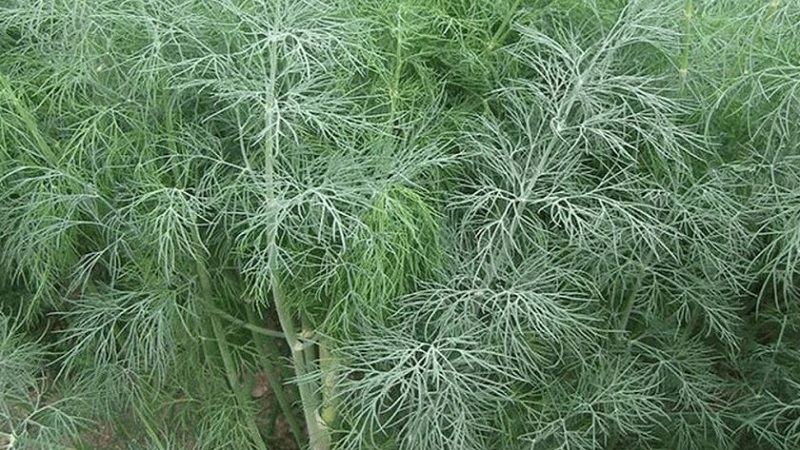
What a disease
Powdery mildew appears in the form of a white bloom, first on the leaves of dill, then passes to the stem... Spots from it are easily erased if you run your hand over them, but then they reappear. Over time, powdery mildew becomes denser and resembles flour.
What is dangerous
This disease is dangerous for the following reasons:
- spreads quickly;
- infectious and capable of infecting various cultures;
- slows down the process of photosynthesis, and, as a result, the plant dies.
White dill, loses taste and aroma.
Attention! Powdery mildew spores are allergens. People prone to allergies should avoid eating greens that are affected by the disease.
What to do to heal
To save the harvest, it is important to notice powdery mildew in time and eliminate it. It is recommended to use biofungicides for processing dillas they are safe for humans and the environment. But their disadvantage is less efficiency.
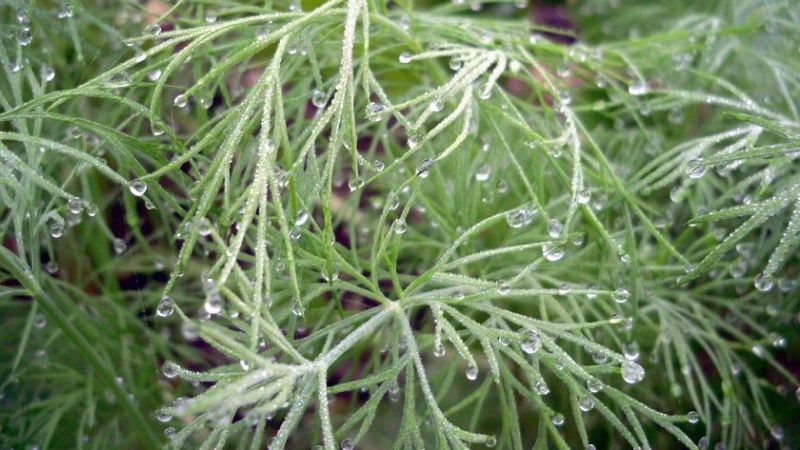
If the plant is severely affected by the disease, you will have to use chemicals or destroy infected bushes (burn, bury deep underground).
Attention! Powdery mildew develops resistance to the components of regularly used fungicides, so the preparations are periodically changed.
Purchased processing tools
Specialty shops for gardeners offer a variety of powdery mildew control products.
Fitosporin
 Microbiological fungicidal preparation representing hay bacillus spores, which, when interacting with water, begin to divide and penetrate into the cells of fungal organisms and bacteria. It not only acts as a natural antibiotic, but also produces acids and vitamins.
Microbiological fungicidal preparation representing hay bacillus spores, which, when interacting with water, begin to divide and penetrate into the cells of fungal organisms and bacteria. It not only acts as a natural antibiotic, but also produces acids and vitamins.
Fitosporin safe for humans, since the main active ingredient in it is a natural bacterial culture. It comes in the form of a powder and paste that is diluted with water and a ready-to-use liquid after opening.
Means recommended for use as a preventive measure or at the initial stages of fungal diseases. In advanced cases, "Fitosporin-reanimator" is used in a can.
It can be useful:
Dill grows poorly - how to feed for a good harvest
"Pseudobacterin"
Biofungicide that has an effect immediately after treatment of plants... Environmentally friendly, the processed crop can be eaten immediately by rinsing thoroughly with water. The drug is available in liquid form.
"Bayleton"
A fungicide of the triazole group, which has a healing and protective effect, the action begins two hours after treatment... The drug is moderately dangerous to humans. To prepare the solution, take 1 g of Bayleton powder per 1 liter of water. First, it is soaked with a little water, then the rest of the liquid is added.

"Tiovit Jet"
Fungicide that is a granule, 80% sulfur... They dissolve well in water. The solution is used at a temperature of + 20-28 ° C. In the process of spraying on plants, it is continuously stirred. The drug is moderately dangerous to humans.
"Topaz"
Specialized preparation against powdery mildew... The protective effect begins to appear within half an hour after treatment and lasts for about four weeks. The drug has a third degree of danger to humans.
Folk remedies
Folk remedies effective in the fight against powdery mildew at the initial stage of the disease:
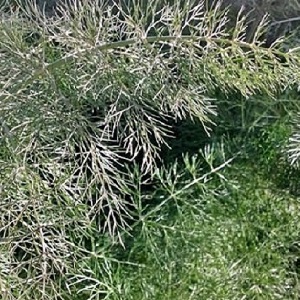 A solution of soda ash or baking soda - 25 g of the drug is mixed with 5 liters of hot water and 25 g of laundry soap, cooled and sprayed on the plants. The treatment is carried out twice with an interval of seven days.
A solution of soda ash or baking soda - 25 g of the drug is mixed with 5 liters of hot water and 25 g of laundry soap, cooled and sprayed on the plants. The treatment is carried out twice with an interval of seven days.- A solution of wood ash - 1 kg of ash is diluted in 10 liters of water and infused for 2-7 days, then filtered and 20 g of crushed laundry soap is added. Treatment of the affected areas is carried out 2 times at intervals of a week.
- Whey solution. Serum is diluted 1: 1 with water. Spraying is carried out at least three times (every three days).
- Potassium permanganate solution - 5 g per bucket of water.
- Mustard - two tablespoons of powder are bred in a bucket of warm water. The solution is used for watering or spraying.
- Iodine - one drop of iodine in 3 liters of water. The solution is used for irrigation.
How and when to process
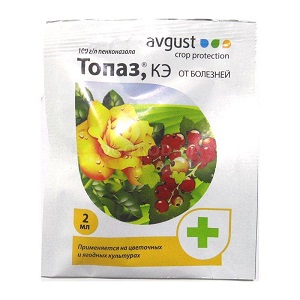 Biofungicides are easily washed off by rain, so they are used several times per season., approximately every two weeks. Their use is possible during any period of plant growth. Spraying is best done in cloudy weather or in the evening, as bacteria quickly die in the light.
Biofungicides are easily washed off by rain, so they are used several times per season., approximately every two weeks. Their use is possible during any period of plant growth. Spraying is best done in cloudy weather or in the evening, as bacteria quickly die in the light.
Chemical preparations are recommended to be used no more than twice a season.... After processing, dill cannot be used for food for 21 days. Spraying is carried out early in the morning or in the evening in calm, clear weather.
Treatment of affected areas before rain is ineffective, since some of the preparations are washed off with water.
Read also:
Features of the fight against powdery mildew in the greenhouse and in the garden
Powdery mildew develops most rapidly in greenhouses., where the humidity is about 80%, and the temperature is + 20-25 ° С. To avoid getting infected with the fungus, follow the rules:
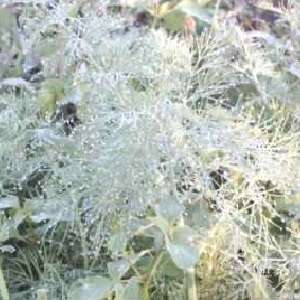 ventilate the greenhouse;
ventilate the greenhouse;- use warm water for irrigation;
- disinfect the greenhouse before planting with bleach or sulfur dioxide;
- in autumn, remove all plant residues and carry out a deep digging of the soil.
If the first signs appear in the greenhouse powdery mildew, stop watering, cut and destroy infected leaves, and spray the greens with a solution of baking soda, potassium permanganate, or fungicides.
To avoid spreading powdery mildew in the beds, remove weeds and plant waste after harvest, do not bury diseased plants in the soil.
If you observed damage to plants in the previous summer white bloom, then before sowing disinfect the soil with a solution of potassium permanganate, soda or special preparations - "Fitosporin", "Topaz".
Preventive measures
It is not difficult to prevent the disease of plants with powdery mildew, it is enough to take care of the plantings and prevent waterlogging. A few recommendations from experienced gardeners:
- avoid too frequent and abundant watering of dill;
- correctly dose nitrogen fertilizers - their high concentration in the soil contributes to the development of pathogenic fungi;
- in the fall, prepare the garden for the next season - remove the remains of plants, foliage, which may contain spores of the fungus;
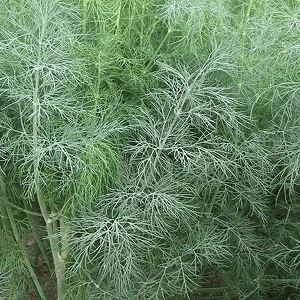 timely apply potassium-phosphorus fertilizers, which form the plant's immunity to white bloom;
timely apply potassium-phosphorus fertilizers, which form the plant's immunity to white bloom;- use biofungicides or other drugs as a prophylaxis against powdery mildew in spring and autumn;
- remove weeds in a timely manner;
- sow seeds evenly;
- choose a sunny site for sowing;
- change the dill planting site with the onset of the new season;
- use only high-quality, disinfected dill seeds - before sowing, they can be soaked in a solution of potassium permanganate (1 g per 100 ml of boiled water).
Conclusion
If the dill is covered with a white coating, the reason for this is powdery mildew. You can get rid of it using chemicals and biofungicides. But, despite the abundance of drugs to combat powdery mildew, it is easier and safer to prevent infection than to deal with it later.
Even in a small summer cottage, it is worth following the rules of land cultivation and sowing in order to enjoy the taste of fragrant greenery in the summer.